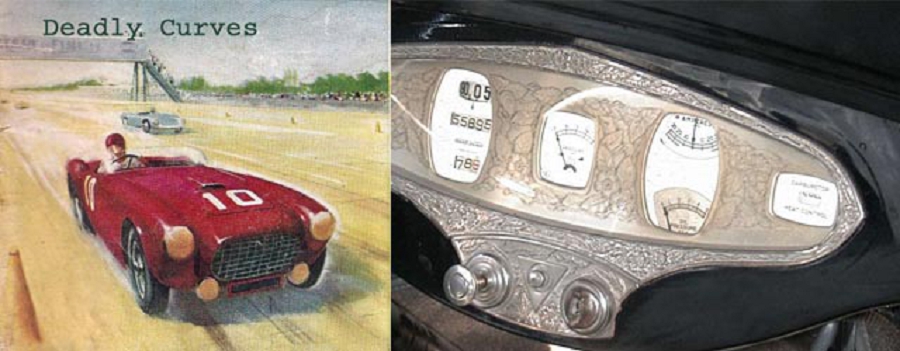
Hi Gang…
From time to time, you’ve heard me share many thanks for the help of Tony St. Clair on different articles here at Forgotten Fiberglass. His expertise and interests lie in so many areas beyond the car hobby – but it’s his focus on cars is why I know him best. Tony’s interests are in automotive magazines, dashboards, gauges, and how these cars were built – especially the handcrafted ones.
And of course, the best thing about Tony and his wife Kate is the honor that I have in calling each a good friend.
Last year, Tony started his own blog on his car interests called “Deadly Curves.” In his blog, he covers his insights, interests and observations across the car hobby and many of these thoughts are related to cars, stories, parts, and other issues related to the cars of the 40s and 50s we have come to appreciate.
Recently, I asked Tony if we could share some of his favorite posts on “Deadly Curves” with our readers here at Forgotten Fiberglass. I was pleased that he said “yes” and today’s story is the next of what I hope to be many stories that Tony cares to share with all members of our ‘glass gang.
So…you now “know” what you need to “know” and away we go!
Take it away Tony…
Deadly Curves: By Tony St. Clair
The 1920’s: Embossed Gauge Panels
The late-Twenties were the last hurrah for stock market instant fortunes, flappers, and the celebrations dedicated to the fading memory of the “War to End All Wars”. It was also the brief, shining moment that artisanal etching and embossing of car gauge panels reached it’s peak. It would flutter on for a few years in the marine dash field, really hitting that zenith with some gorgeous seascapes on metal, but then it would go away, and it’s our loss.
In the closing days of the 1920’s, the car to have was the Stutz. It was fast, beautiful, and exclusive. One of the flourish’s added to the Sports Tourer interior was this gauge panel. The gauges were a soft ivory face-color, but the surround was golden and magnificent, with the winged-helmet Sun God Ra framed by intricate etching.
It garnered plenty of company. Check out this Kissel panel.
The vine and leaf design was immensely popular. But so were animal motifs. Here’s a 1928 Reo set.
Absolutely stunning. Even in plain Jane firetrucks, like this early Prospect truck, the gauge panel is fancy.
In the auto world, the embossed style seemed to blow out with the 1929 Hudson and Essex panels. Again, the vines, flowers, and even pinecone patterns lent themselves well to edging and swirling around the gauges. Here’s the 1929 Hudson, 29 “Greater” Hudson, and 1929 Essex gash clusters…
The 1929 Hupmobile Opera Coupe panel featured Griffins and a chariot…
And so it was left to the boat industry, where the sentimental ideals always lasted a bit longer than in the car business, to keep the embers going. They riffed on ocean and maritime imagery, expanded on the advances in imprinting pictures, and created some truly gorgeous pieces. Here’s the 1930 Dodge boat Runabout cluster, splashed with sun rays and bare-breasted mermaids in polished chrome…
It was Chris Craft who finally reached the apex of this scheme. Their etched scenes of storm-tossed waves and small ships was evocative and meaningful. They began as the others waned, first with the standard motifs of the era…
But then, as I mentioned above, the later styles are breath-taking.
For a few years, there was the occasional stamping of logos or brand name on the panels by both car and boat makers, but it was desultory and half-hearted, like the Nordberg panel below.
Or La France firetrucks, although they really went the extra-mile with the stylized Maltese Cross emblem writ-large…
Then the art faded away. The newest trends eschewed “frills”, and mid-Century modernism raised it’s ugly no-nonsense head in the Fifties. However, for a few years, car and boat designers embraced their inner sculptors, and really stretched the boundaries of panel design, and left us with these and other beautiful reminders of the Jazz Age.
Summary:
Thanks again to Tony St. Clair for sharing another story with us – always a pleasure to showcase here at Forgotten Fiberglass. And…for those of you who would like to read his blog and enjoy his stories, click on this link to take you to Tony St. Clair’s “Deadly Curves”.
Hope you enjoyed the story, and until next time…
Glass on gang…
Geoff
——————————————————————-

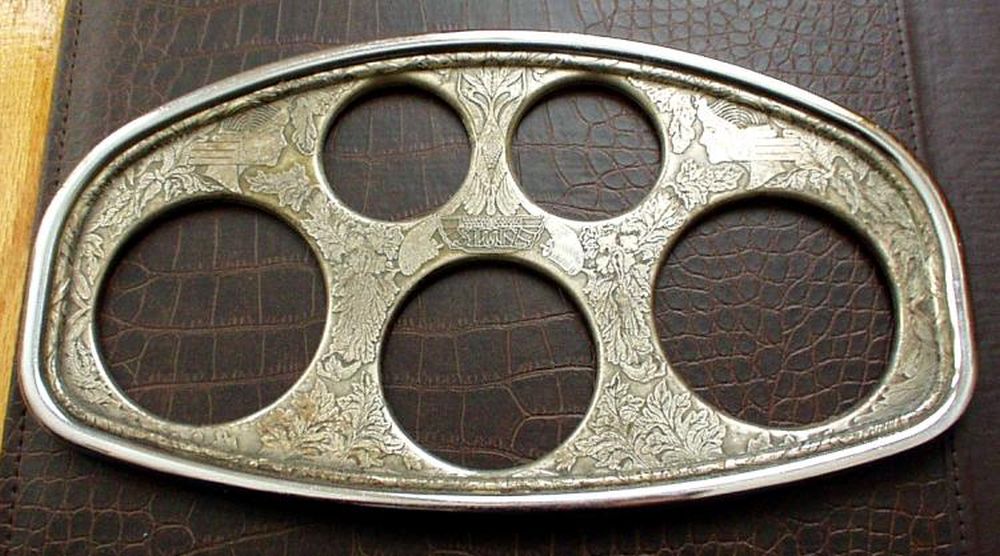
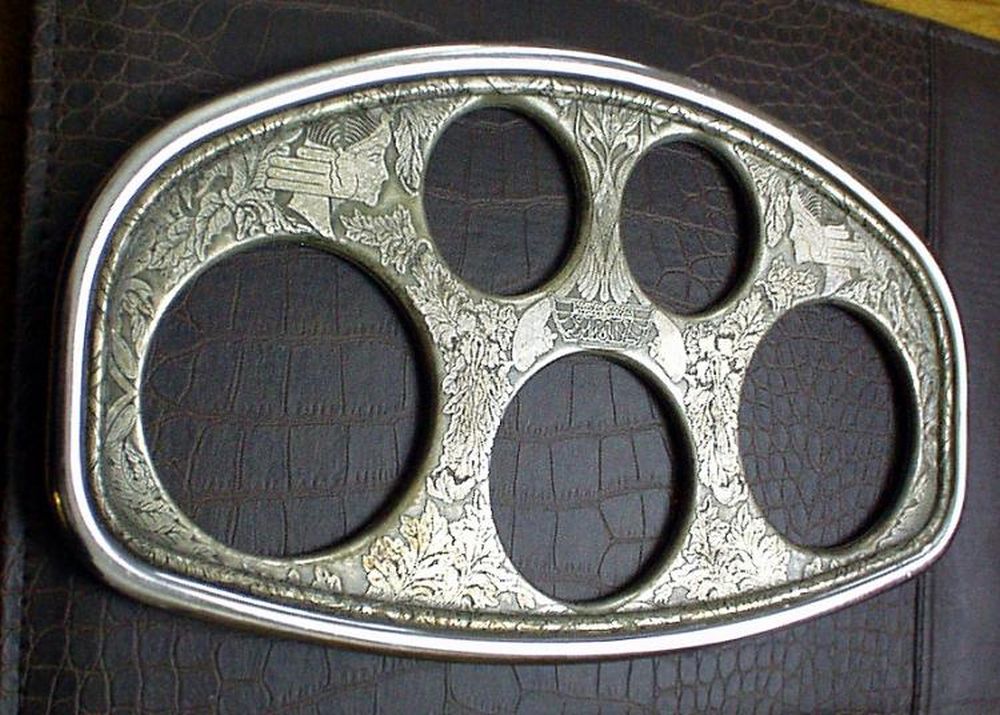
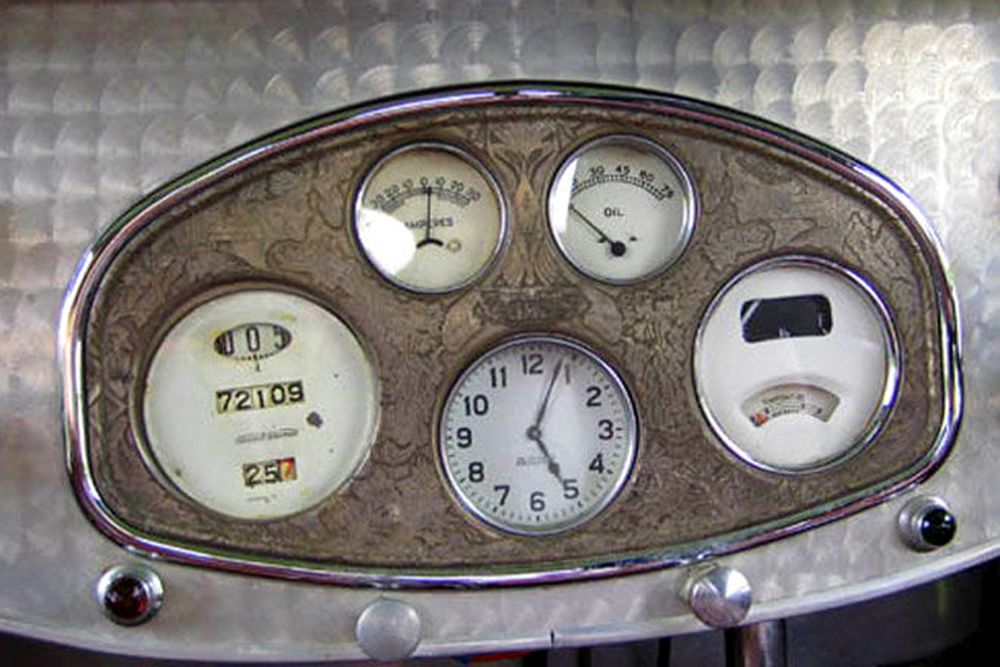
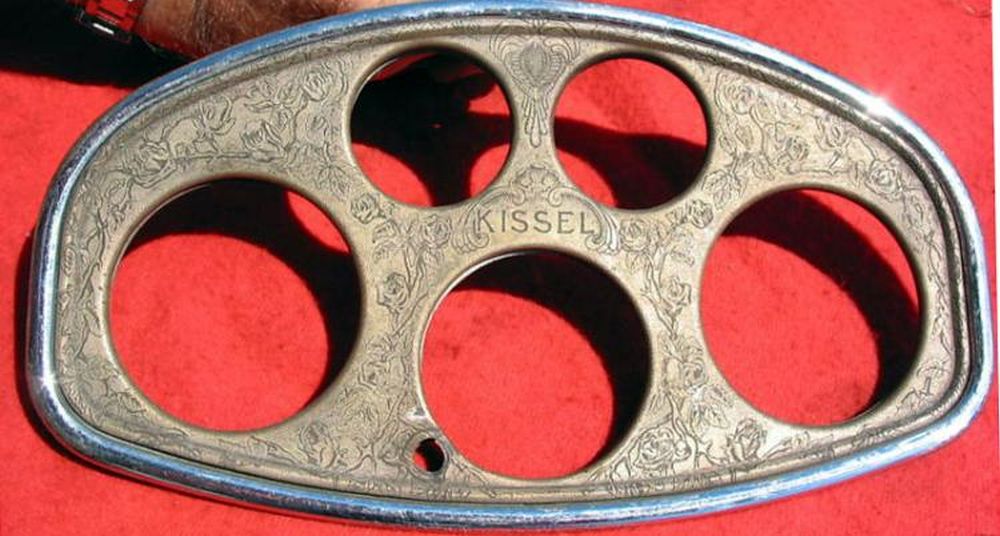
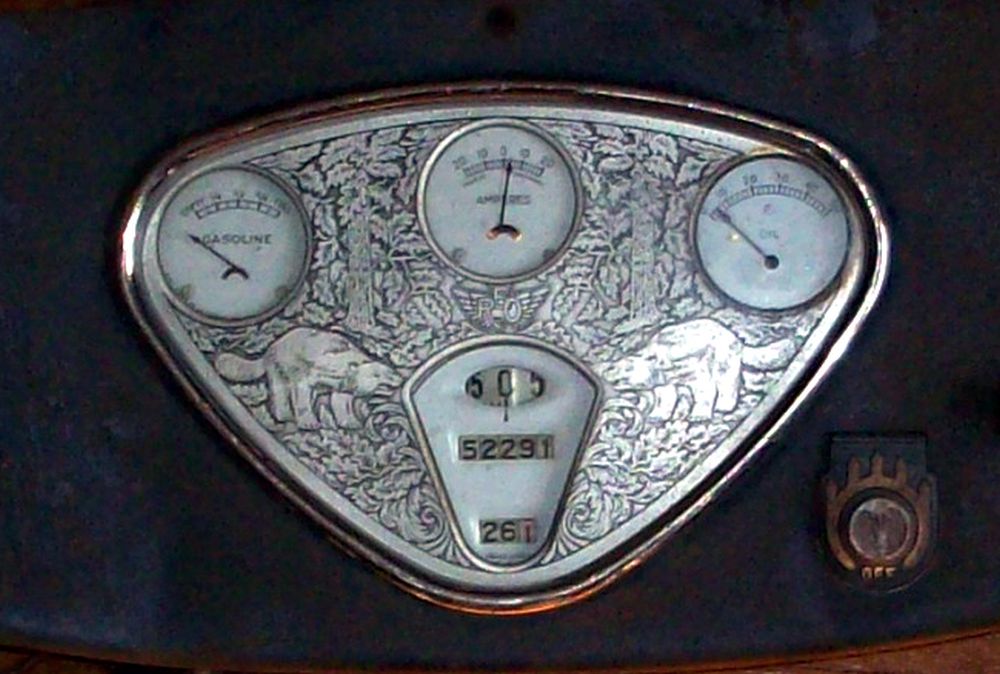

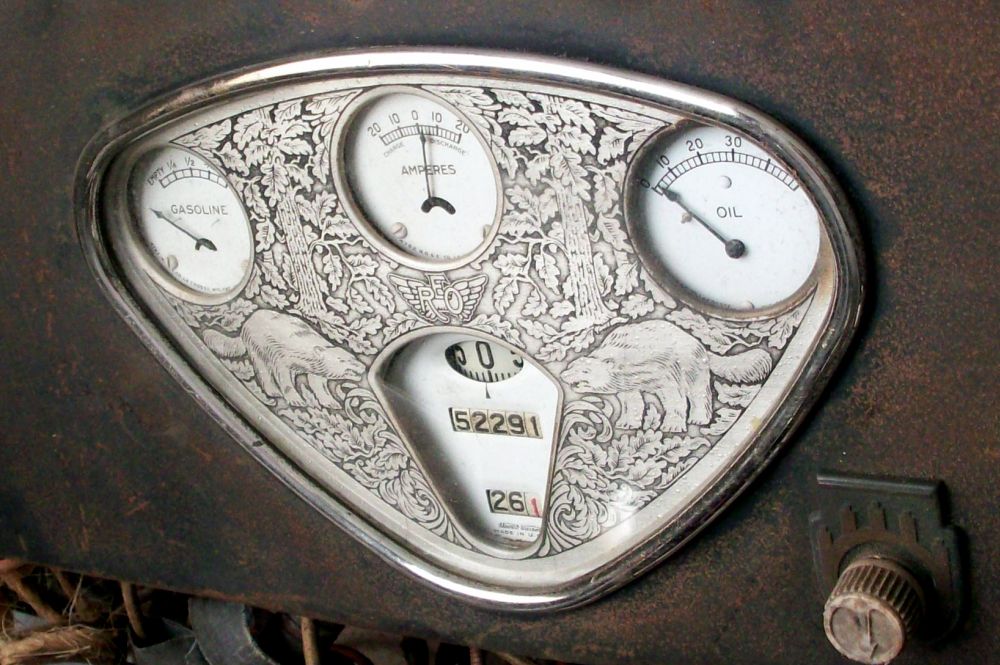
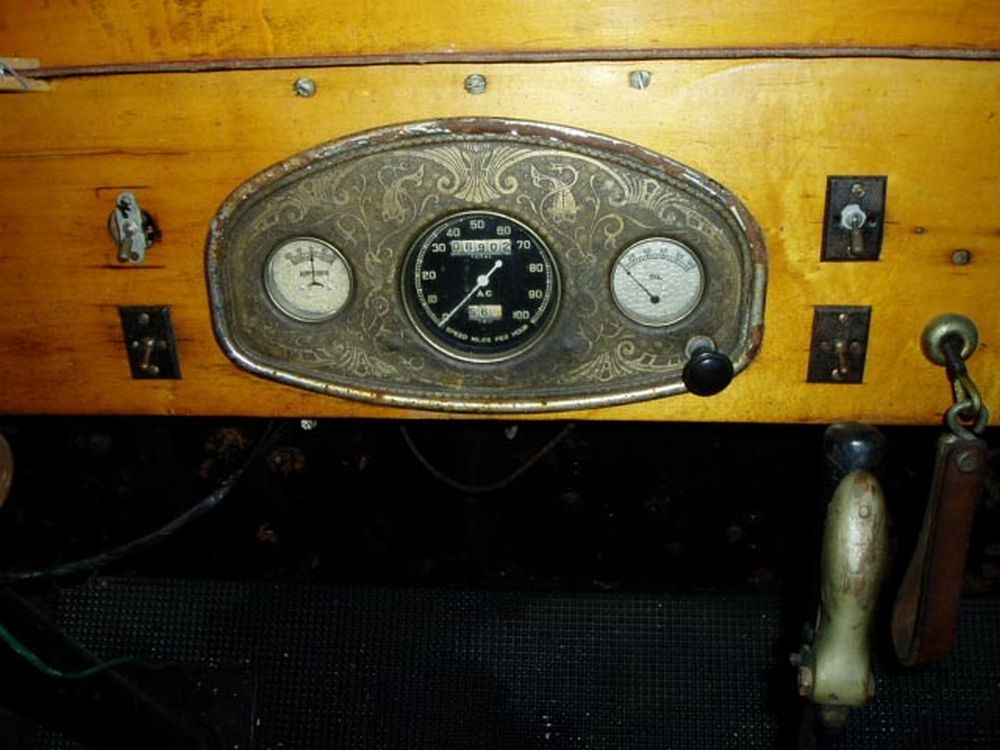
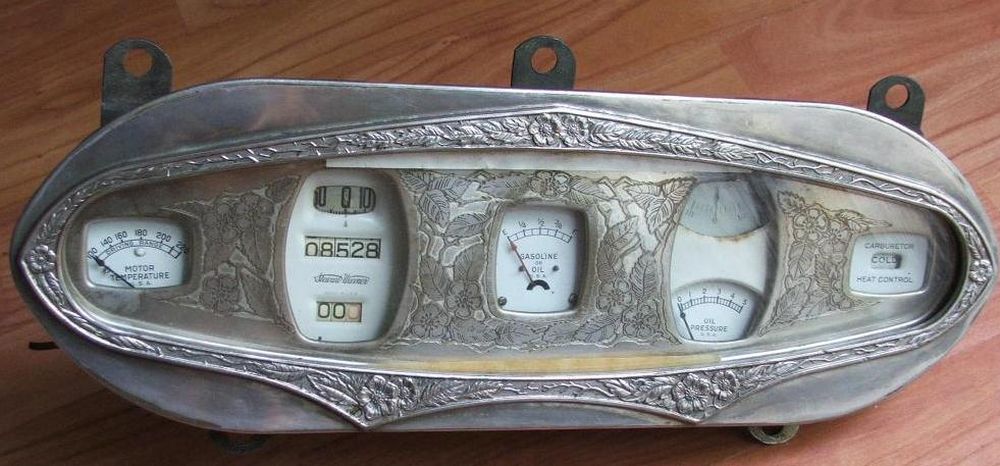
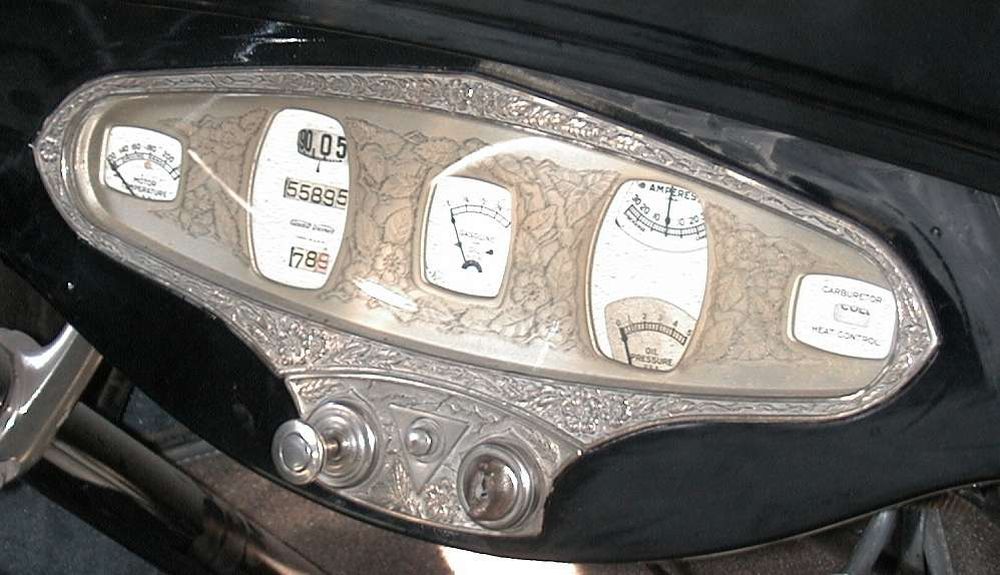
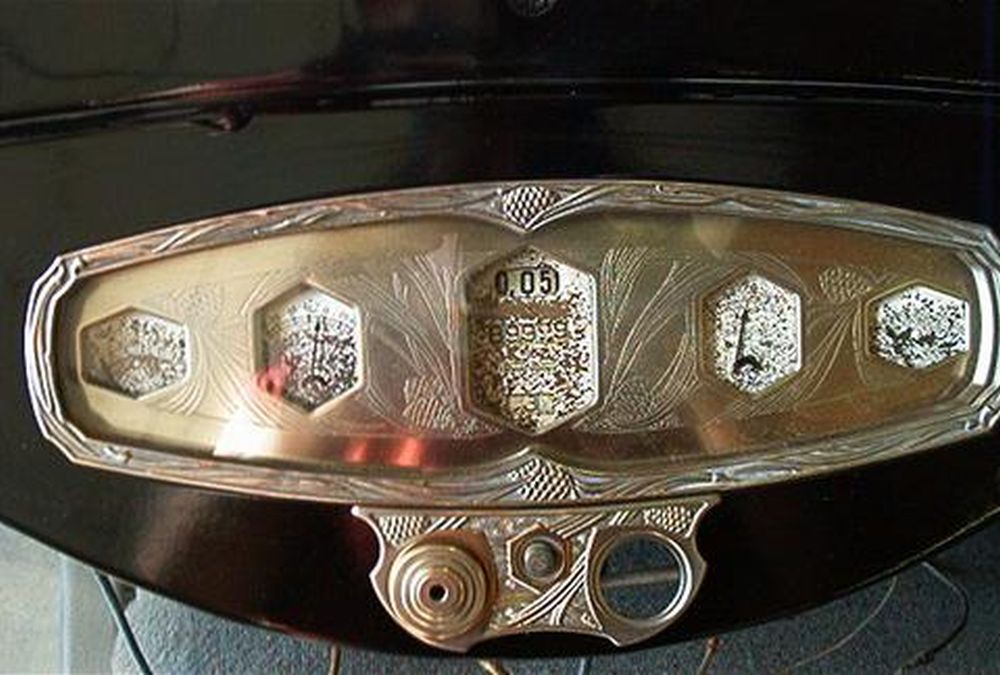
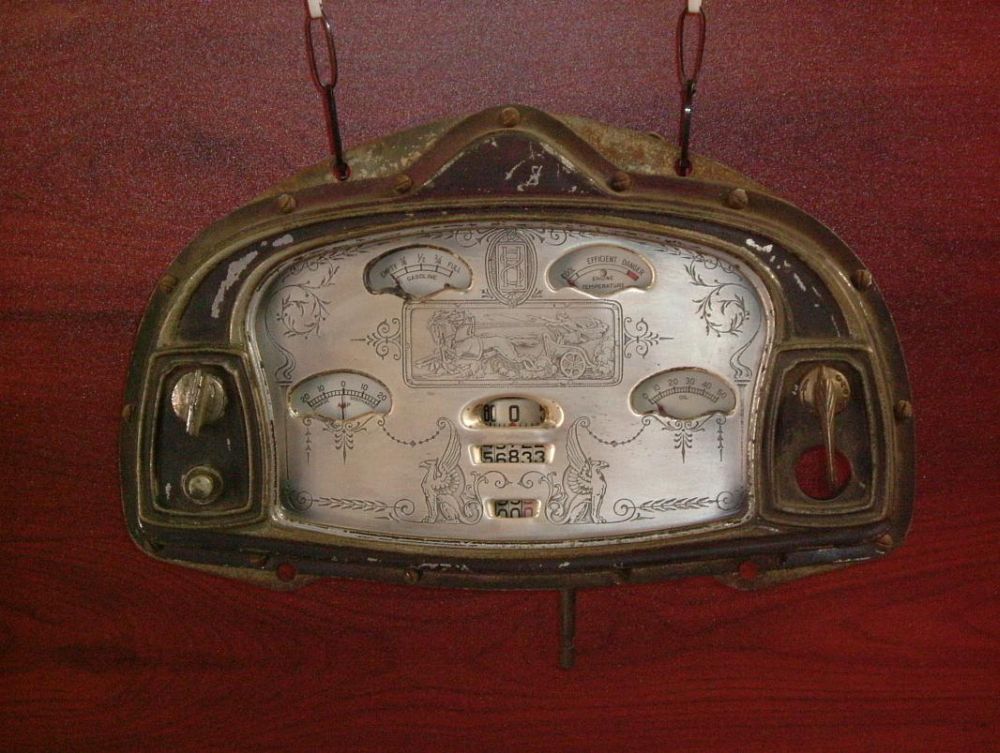
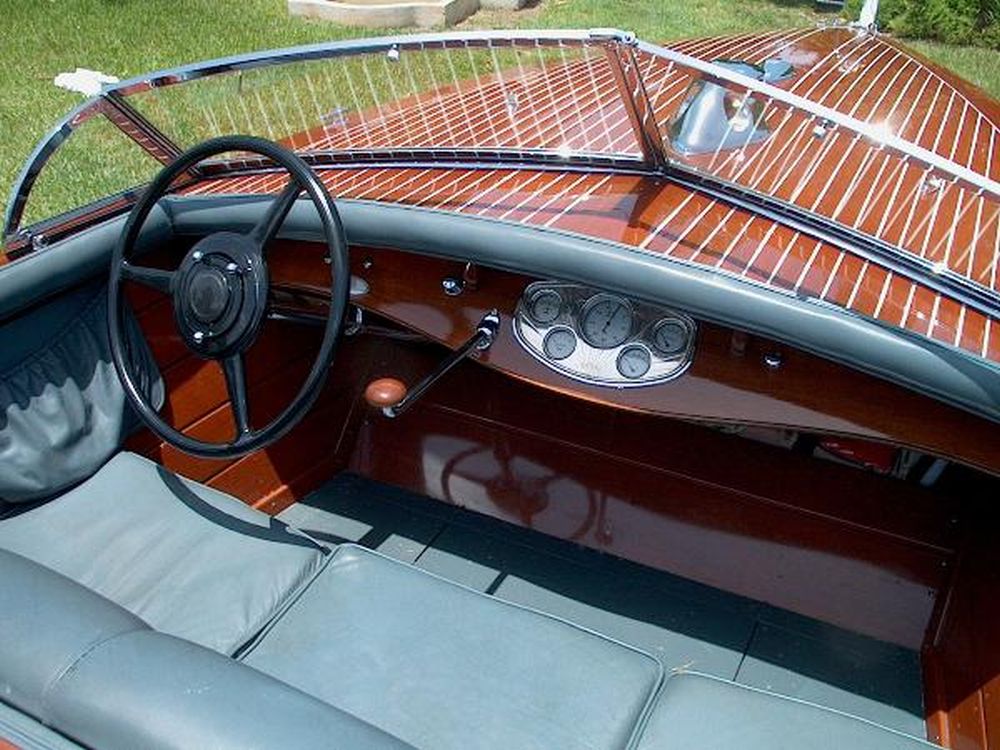
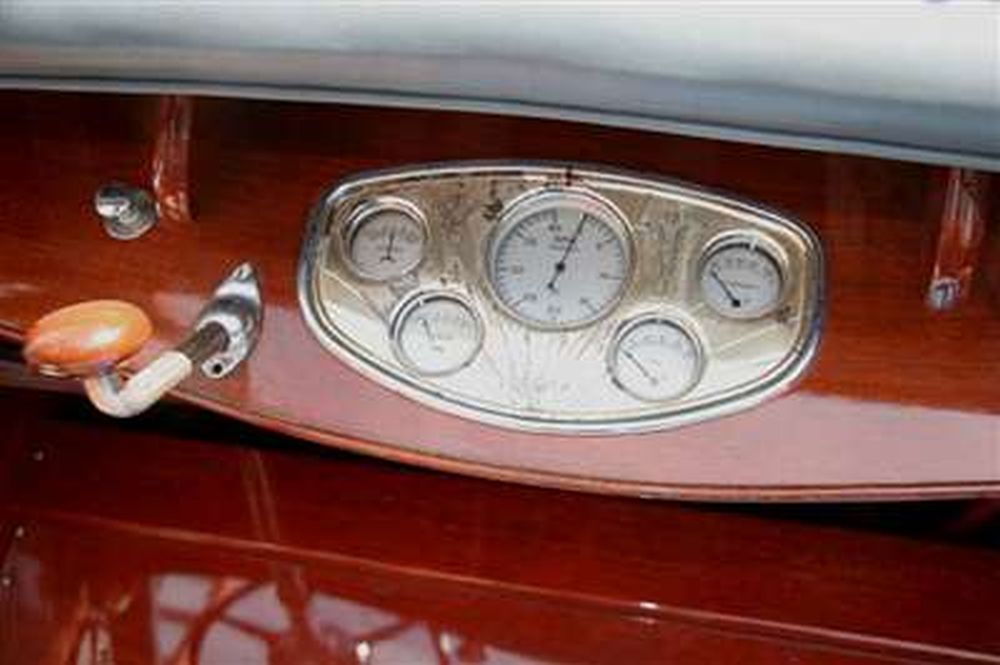
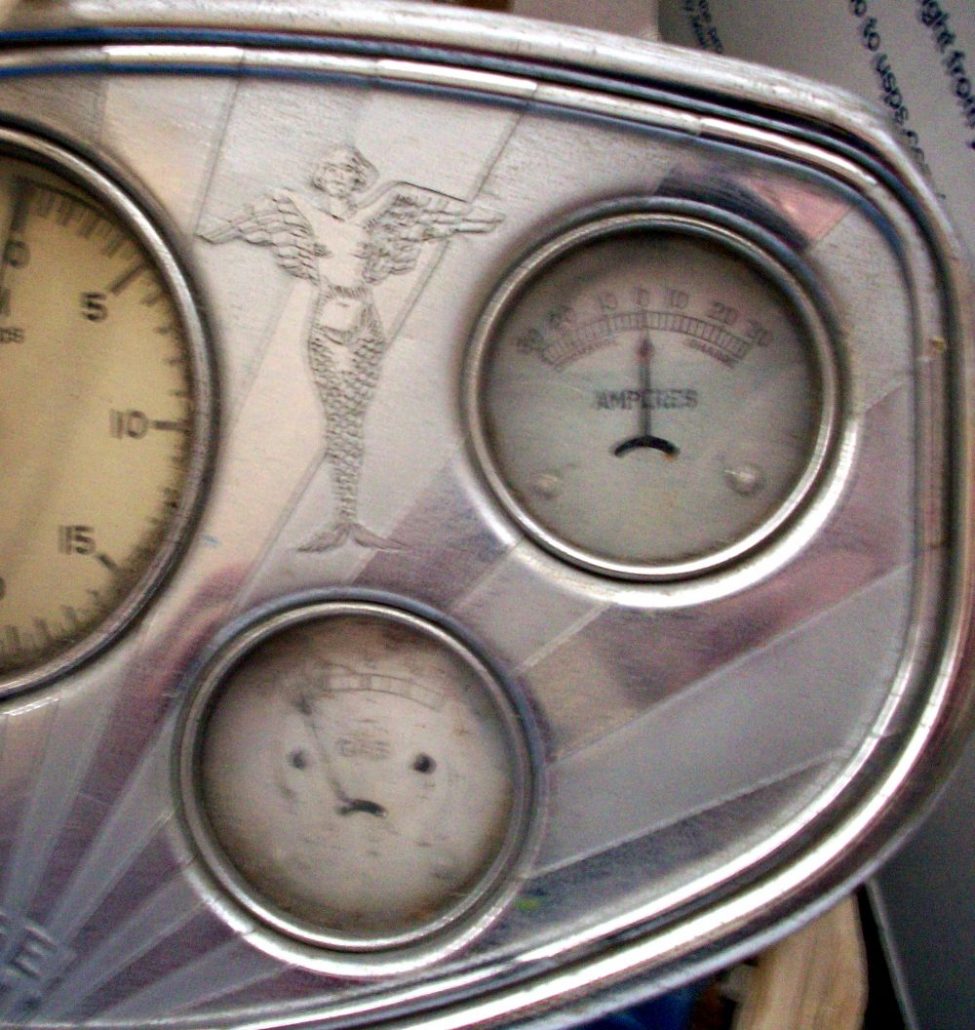
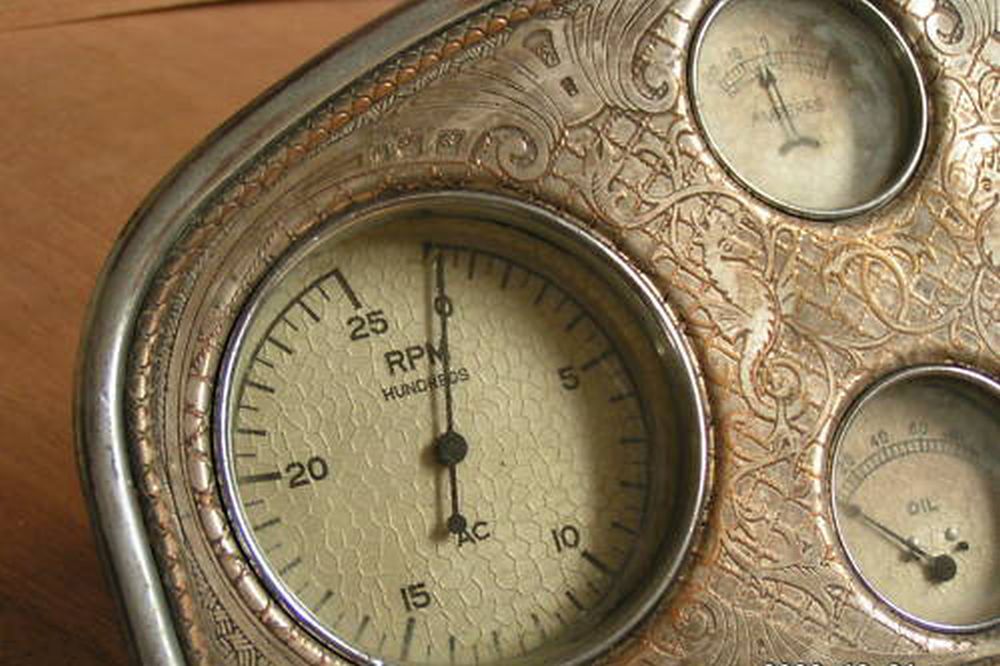
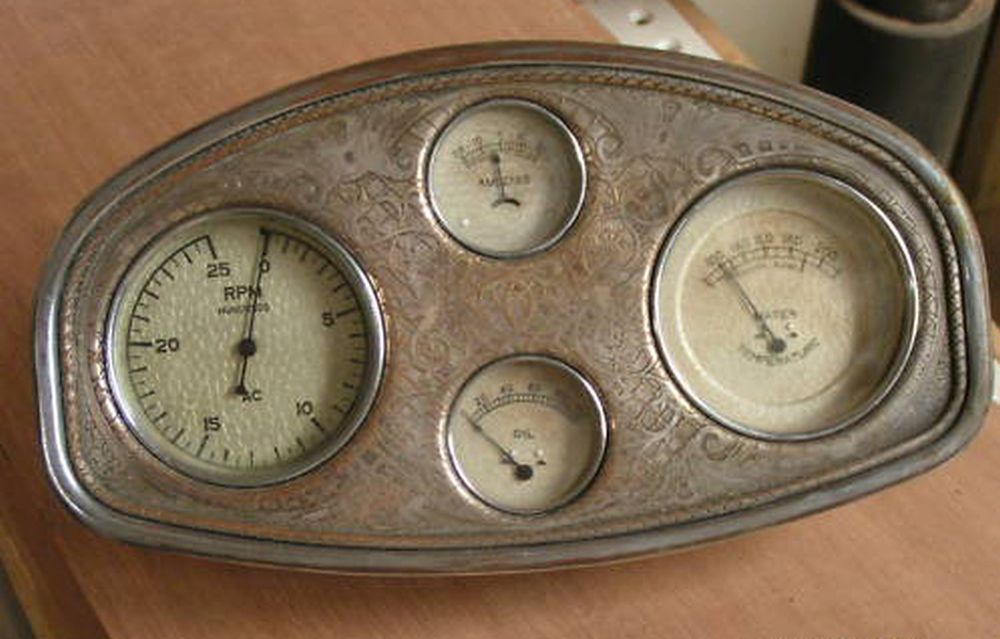
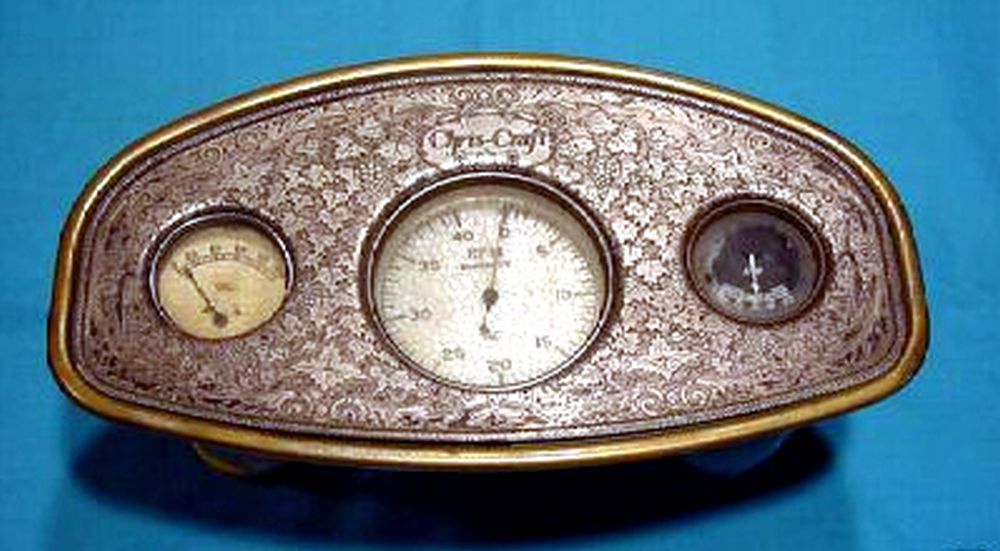
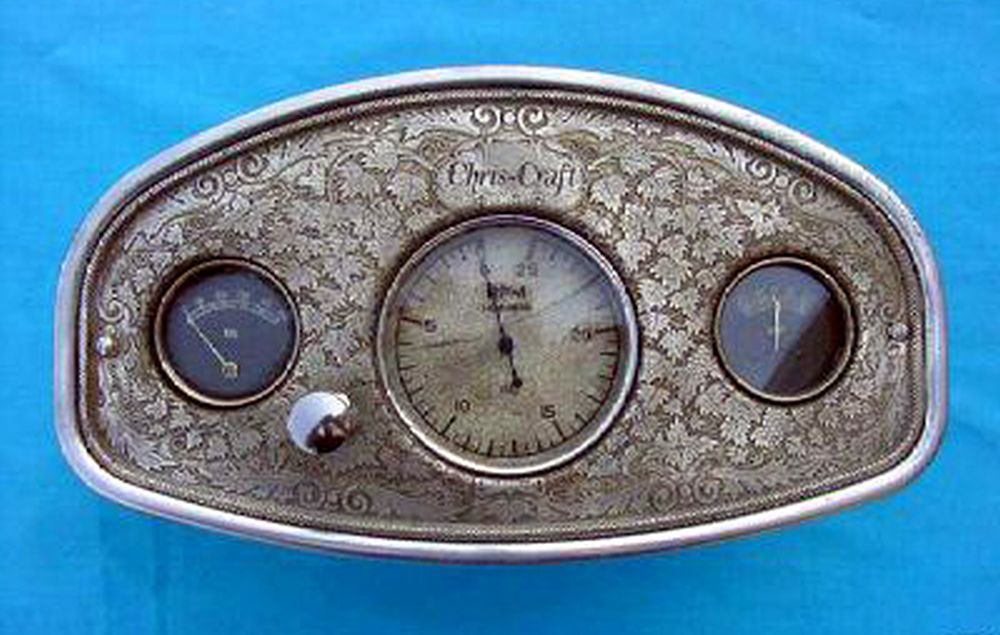
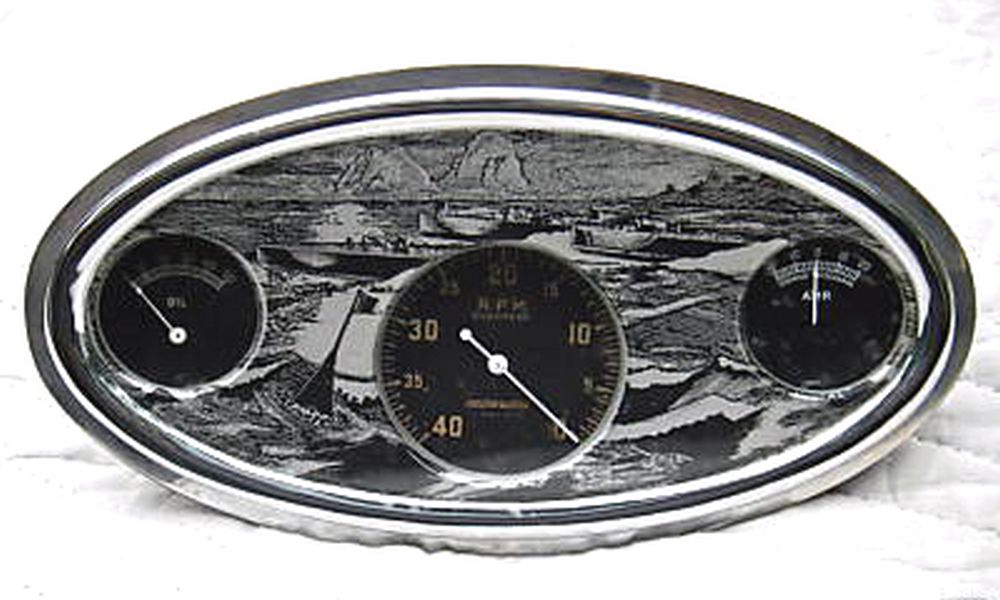
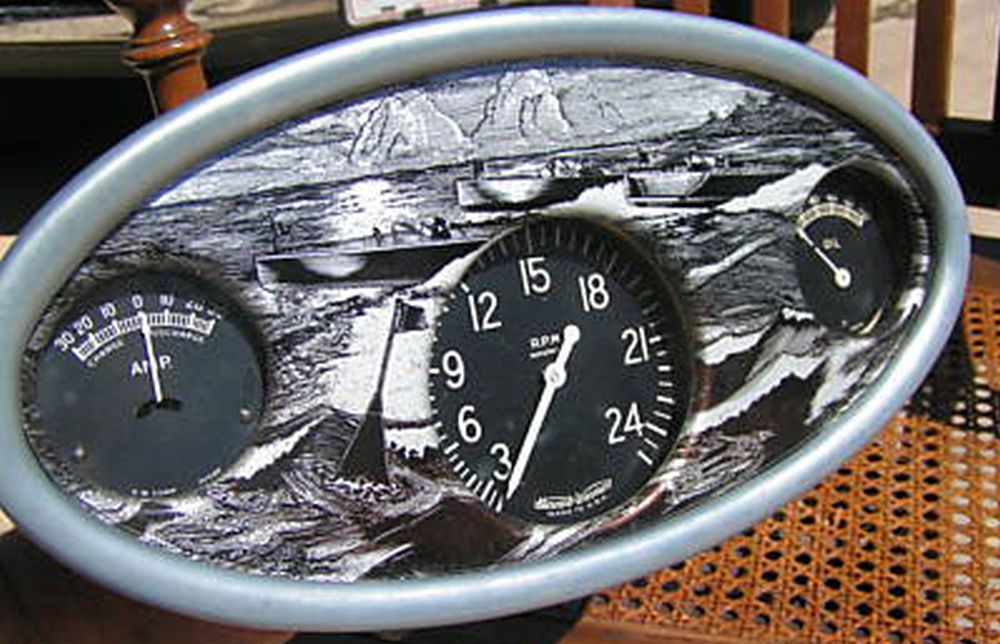
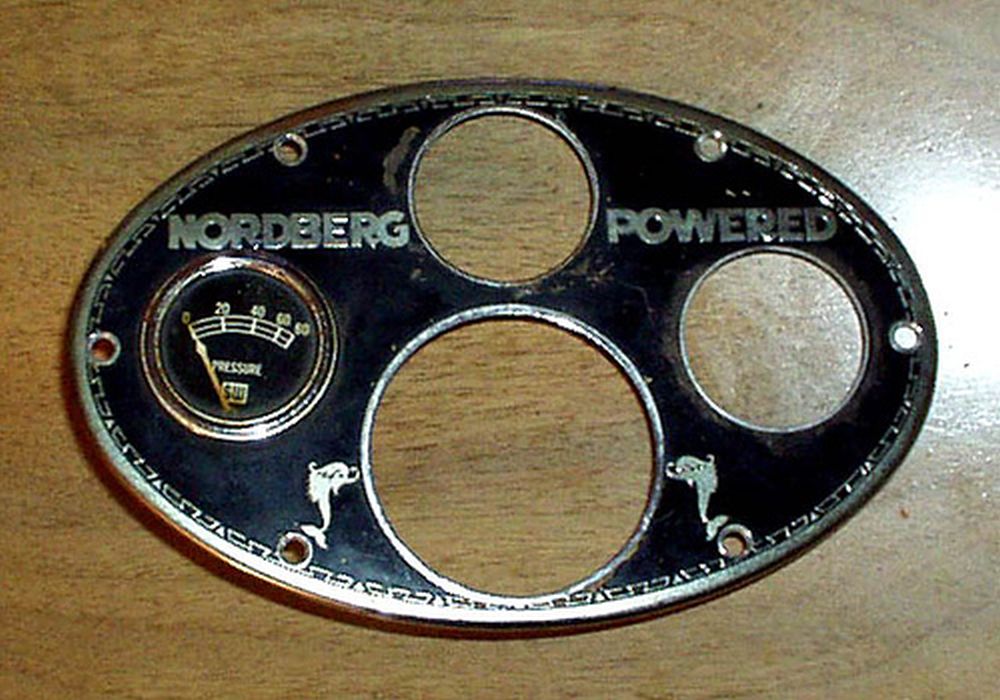
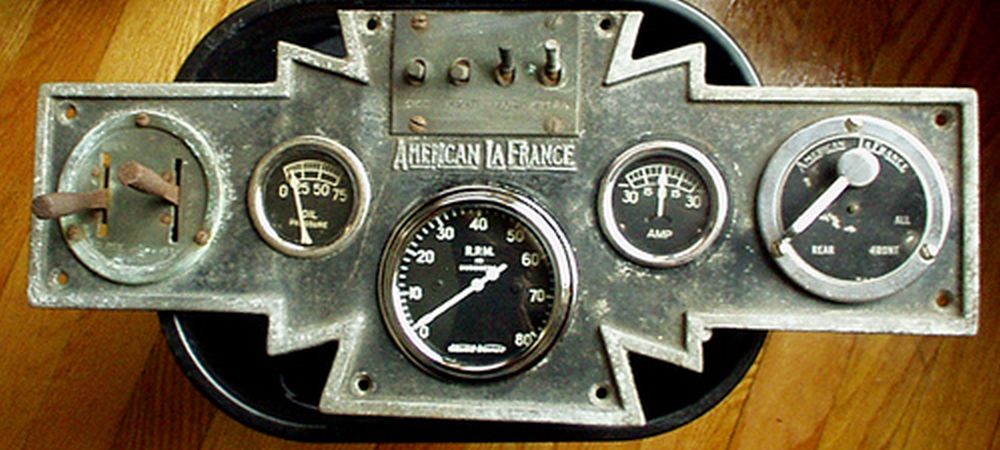
I’m an artist that creates fine art etchings.
What most people don’t realize is that in fine art you make/etch a master plate. Then make 25 to 100 prints on paper, with the one master plate making all of the impressions.
With the etched dash plates as shown in this article, each is a master unto itself. If you want a new dash plate for the next car/boat you start with a new plate and start the process all over again (time consuming and expensive).
To reproduce one of those dash plates or create a new one is possible. I could do one. But, as they say enough money will buy most anything. It would not be cheap and no, you can’t have it next week.
What a great article.
For those who are not familiar with the etching process, please see my web site:
rdpetersonart.com and go to the definitions page.
The etching process started around 1050 AD when kings and knights wanted designs on their shiny armour. After the process was perfected, artists then used the process to create limited edition fine art plates and prints. This process is still in use today by fine art print makers. I am a print maker.
~ Bob, your work is outstanding, exceptional. i am really not a player for your craft but it is wonderful that the art is carried on. sc
The word that comes to mind is ” elegant”
The V-12 that American La France used was a continuation of the Auburn Lycoming engine. It was one of the last engines that Fred Duesenberg engineered. A la F started using them in 1937 at the 390 cid size. After the War they were bored out to nearly 500 cid and produced until 1956. A few were put in trucks built in 1957.
I had one of the last ones that came out of the Moab UT engine. They put a Cummins in it about 1975. The V-12 also went into an Auburn Speedster project.
The american la france brings back the time i pulled a 500 cubic inch V12 out its engine bay .I finnaly sold that engine to a made who owned a Auburn. I do not remenber the dash but it was a open cab fire truck ,the motor was continental mike
Great pics and dash inserts, lots of art deco there, beautiful.
~ magnificent pieces.
. and brilliantly written.
Thank you, Scott!
Tony